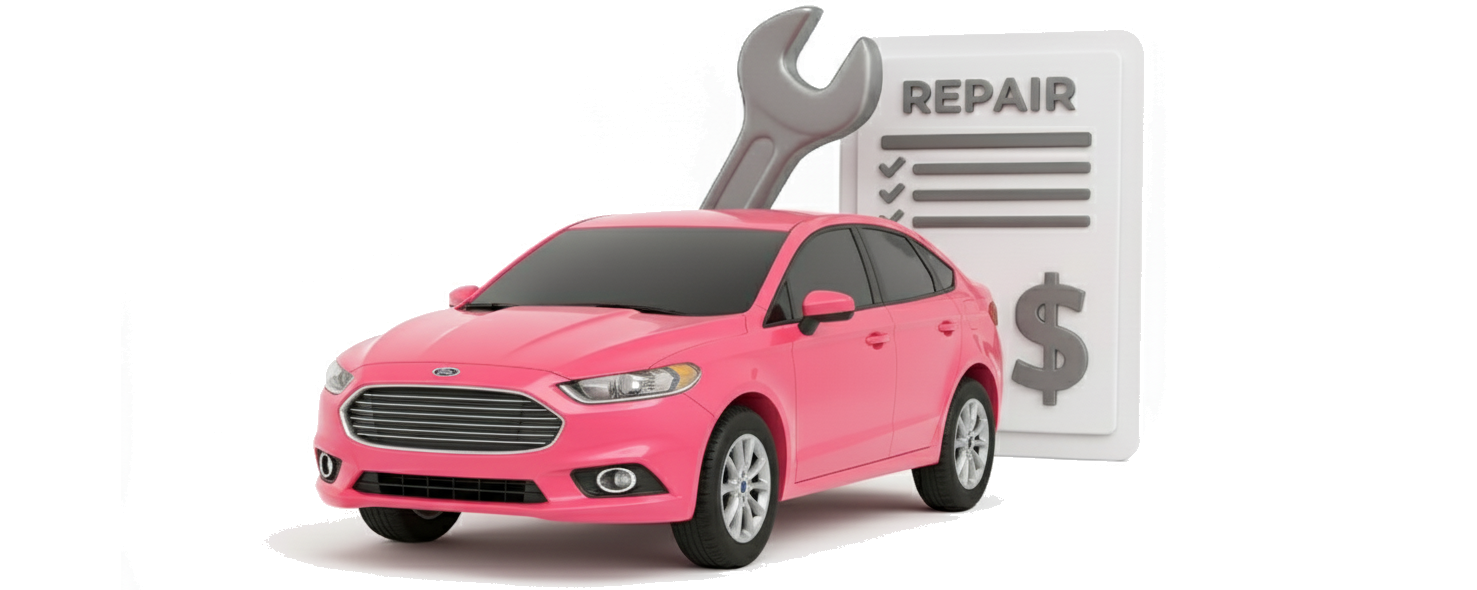On budget models with easy access you might see totals around $200; on luxury, hybrid, or tight-packaged SUVs and trucks, the bill can climb to $1,134 to $1,800.
The Jerry app can help you compare prices from trusted shops to find the repair at a reasonable price.
Real customers Jerry helped
Pricing can vary based on location, specific vehicle, and parts, but Jerry uses real customer experiences to show what drivers are paying for services right now. Here are some examples:
Estimates are modeled based on real vehicle and location data; names have been changed. Actual prices will vary by shop, parts, and vehicle condition.
What is an A/C condenser?
The A/C system circulates refrigerant through a closed loop, changing it from gas to liquid and back to move heat out of the cabin. The condenser is the radiator-like unit at the very front of the car. Hot, high-pressure refrigerant gas from the compressor enters the condenser; airflow from vehicle speed and the condenser fan pulls heat out, condensing the gas into a high-pressure liquid. That liquid then heads toward the expansion device, where it rapidly cools and helps chill the air blown into the cabin.
Symptoms of a failing A/C condenser
Jerry customers are seeing these common symptoms of a bad A/C condenser:
- Warm A/C.
- Oily residue on the condenser face (refrigerant oil leaks).
- UV dye traces after a leak test.
- A no-cooling condition that prompts the system to shut the compressor off to protect itself.

Cost breakdown: why the price varies
When shops price an A/C condenser job, Jerry customers find that several levers move the final number. Think of each factor as a slider that can nudge the bill up or down.
Part choice (OEM vs aftermarket condenser).
A quality aftermarket condenser can save $150 to $400 over OEM without sacrificing performance. OEM-only designs or integrated sensors narrow your options.
Refrigerant type and charge amount.
R-1234yf (used on most 2017+ models) costs significantly more than older R-134a. The difference at the register is commonly $60 to $180, and large SUVs or minivans with higher charge weights amplify that gap.
Labor time (access matters).
Accessibility to the A/C condenser can add one to two hours of labor – $120 to $300+ depending on your local labor rate.
Required add-ons.
New O-rings, refrigerant oil, and often a receiver/drier or desiccant bag (some are built into the condenser) are inexpensive individually but together can add $40 to $150 — money well spent to protect your new condenser and the compressor.
Shop type and region.
Dealerships often charge higher labor rates and use OEM parts by default. Seasonal demand can push prices up 5 to 10% compared to off-season.
Vehicle features.
Front camera modules, adaptive cruise sensors and active grille shutters can extend disassembly and calibration time, adding $50 to $250 to the ticket.
Root cause and collateral damage.
Fixing a puncture is straightforward. But corrosion, debris, or leaks could spell further costs.
As a rough allocation, parts are often 40 to 60% of the total on mainstream models, labor 25 to 45%, and A/C service supplies 10 to 20%.
Your action plan: how to save money
To keep the bill honest — and the repair lasting — use this mechanic-approved checklist.
Confirm the diagnosis.
Ask the shop to show the evidence (e.g., dye traces or pressure readings). A proper diagnosis – the Jerry app can assist with tailored guidance – prevents needless repairs.
Replace the right extras.
If the drier is integrated, the new condenser covers it. Otherwise, replacing the receiver/drier (or desiccant bag), O-rings, and adding the correct oil type/amount protects against moisture-related failures.
Insist on a precise recharge.
The system should be evacuated, vacuum-tested, and recharged according to specs to protect the compressor.
Choose parts smartly.
For non-luxury vehicles, a reputable aftermarket condenser from a known brand can save $150 to $300. On vehicles with delicate active grille shutters or oddball fittings, OEM might be the safer bet.
Time your repair.
If you can handle a few weeks of mild weather, off-season scheduling may lower prices and wait times.
Bundle work when the front end is off.
If the bumper is already coming off, ask about A/C fan inspection and coolant radiator condition. Combining labor now can avoid paying for duplicate disassembly later.
Skip stop-leak.
Sealants can gum up recovery machines and expansion valves. Most shops refuse service after a stop-leak attempt.
Get a line-item estimate.
Ask for part number/brand, labor hours, refrigerant type and amount, and any calibration fees. Transparent quotes are easier to compare — and to negotiate.
Ready to compare estimates? Download the Jerry app.
DIY vs. pro: Can I do this myself?
You can mechanically swap a condenser in a driveway on many vehicles, but the refrigerant handling and precise recharge are where DIY vs professional A/C repair gets dicey. A hybrid approach is possible. Jerry offers customers greater transparency on parts and labor to make the decision easier. Here’s a side-by-side comparison.
Before you book, download the Jerry app to find a repair shop near you.
Related repairs
Jerry customers are bundling condenser replacements with further repairs:
- Receiver/drier or desiccant bag. Keeps moisture out; replacing it protects the new condenser and compressor.
- Condenser/radiator fan assembly. Weak fans cause poor heat rejection at idle; if the fan is failing, new A/C won’t stay cold.
- Expansion valve or orifice tube. If contamination is found, replacing it helps stabilize pressures and cooling performance.
- Front bumper/grille work. Some vehicles require removal for access; reused clips or tabs that are brittle may need replacing.
- A/C pressure sensor or lines. Due to corrosion, you may need a new line — better now than a comeback leak later.
What our customers are asking
-
Is it okay to recharge the system without fixing the leak?
-
Do I need to replace the receiver/drier?
-
How long does a condenser last?
-
Is it safe to drive with a bad condenser?
-
How long does the repair take?
-
Why is R-1234yf pricier?
-
Any brand tips for condensers?
-
Can insurance cover a broken condenser?

Steve Kaleff began working on cars at the very young age of nine years old, when his dad actually let him make fixes on the family car. Fast forward to the beginning of a professional career working at independent repair shops and then transitioning to new car dealerships. His experience was with Mercedes-Benz, where Steve was a technician for ten years, four of those years solving problems that no one could or wanted to fix. He moved up to shop foreman and then service manager for 15 years. There have been tremendous changes in automotive technology since Steve started his professional career, so here’s looking forward to an electric future!

Nick Wilson is an editor, writer, and instructor across various subjects. His past experience includes writing and editorial projects in technical, popular, and academic settings, and he has taught humanities courses to countless students in the college classroom. In his free time, he pursues academic research, works on his own writing projects, and enjoys the ordered chaos of life with his wife and kids.









